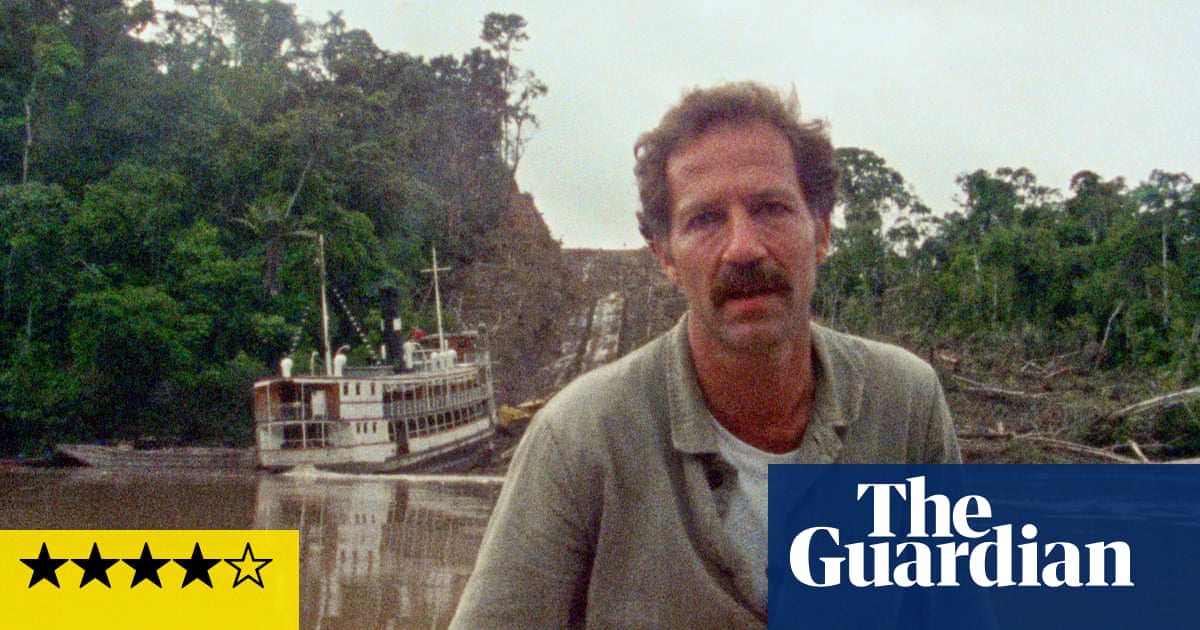In 1982, film-maker Les Blank released this sombre, thoughtful, quietly awestruck documentary account of Werner Herzog’s crazy sisyphean struggle in a remote and dangerous Peruvian jungle location, making his extraordinary drama Fitzcarraldo, which came out the same year. Fitzcarraldo was Herzog’s own bizarre and brilliant story idea, crazily amplifying and exaggerating a case from real life.
Early 20th-century opera enthusiast Brian Sweeney Fitzgerald, played with straw-hair and mad blue eyes by Klaus Kinski, goes into the rubber trade to make enough money to realise his dream of building an opera house in the Peruvian port town of Iquito; he works out that the steamship needed to transport materials can only be brought into the required stretch of water by dragging it across land between two tributaries. This is a crazy, magnificent and operatic obsession, more grandiose than anything that could be presented on stage, for which he will need Indigenous peoples as slave labour to haul the ship. By playing these tribes his Caruso records on an old gramophone player, he persuades them he is a white god who must be obeyed.
In the original case, an entrepreneur (called Carlos Fermin Fitzcarrald) reportedly transported a 300-ton ship across land by disassembling it into a couple of dozen pieces; Herzog insisted on shifting the ship whole, and moreover insisted on filming these scenes in the remote interior, not near Iquito itself – which would have been far easier and probably would have looked the same. In the jungle, the cast and crew suffered the agonies of early settlers and colonial adventurers: illness, discomfort, poison-arrow attacks and, above all, mind-bending boredom as the weather meant that nothing could be done for months at a time. Perhaps no other period movie in history has so closely duplicated the subject matter in its gruelling shoot.
Herzog’s original lead casting, Jason Robards, dropped out with amoebic dysentery and Mick Jagger, who was to play the innocent sidekick, evidently saw what an ordeal he was in for and dropped out as well, citing the need to record the album Tattoo You. Herzog surrendered to the inevitable and cast his old frenemy-slash-muse Kinski; but the mercurial hothead-genius was naturally hurt at not being first choice and made everyone’s life hell with arguments and complaints. And it is difficult to get your head around the thought of what it must have been like for the cast and crew just waiting, waiting, waiting for Herzog to decree that, yes, we can shoot.
This is a strangely subdued documentary, recorded as it was more or less contemporaneously with the film itself but which doesn’t fully show the nightmarish things which were soon to become legendary. (Fax Bahr and George Hickenlooper’s 1991 film Hearts of Darkness: A Filmmaker’s Apocalypse, about the horror of making Coppola’s Apocalypse Now in the late 70s, had the advantage of time and gave us far more juicy and scary material.) Herzog himself is shown talking mournfully about his disasters: the light-plane crashes that are supposed to have critically injured some people and paralysed another. (But these people are not named. What actually happened?)
We do however see the darkness and intensity of Herzog himself as he descants on how much he loves but also hates the jungle in that unmistakable voice of his. “The birds don’t sing … they just screech in pain. Theirs is the harmony of overwhelming collective murder … I love it against my better judgment.” Amazingly, Herzog always looks in pretty good shape, considering what he’s gone through, and put others through. His burden of dreams is borne with some style. It’s a good curtain-raiser to the film itself.
Burden of Dreams is in UK cinemas from 23 May.
